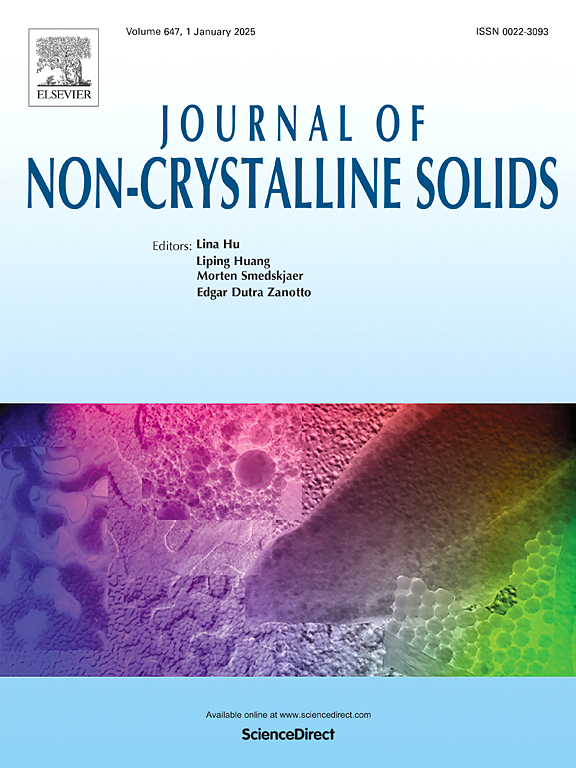Synthesis and luminescence investigation of Eu3+ and Dy3+ doped NaAl(PO3)4 glass for solid state lighting applications
IF 3.2
3区 材料科学
Q1 MATERIALS SCIENCE, CERAMICS
引用次数: 0
Abstract
Phosphite based glass phosphors have been a potential candidate in the field of luminescent spectroscopy. In this respect, the proposed work of Eu3+ and Dy3+ doped NaAl(PO3)4 glass samples prepared by melt quenching synthesis technique. The emission spectrum of Eu3+ doped NaAl(PO3)4 glass demonstrate sharp and intense peaks at 594 nm and 614 nm region ascribed to typical 5D0→7F1 and 5D0→7F2 transitions of Eu3+ ions. In the case of Dy3+ doped NaAl(PO3)4 glasses, emission spectra display an emission band at 482 nm (blue colour) and 576 nm (yellow colour) due to the 4F9/2 to 6H15/2 and 4F9/2 to 6H13/2 transitions of Dy3+ ions. Furthermore, Commission Internationale de l'Éclairage (CIE) chromaticity coordinates and colour purity of the prepared samples were calculated using a CIE colour calculator. The CIE chromaticity diagram depicts coordinate in the near red and near white color region for Eu3+ and Dy3+ doped samples, respectively. According to obtained results, it was found that prepared glass samples have a huge potential for future investigation in the field of solid-state lighting and display devices.
求助全文
约1分钟内获得全文
求助全文
来源期刊

Journal of Non-crystalline Solids
工程技术-材料科学:硅酸盐
CiteScore
6.50
自引率
11.40%
发文量
576
审稿时长
35 days
期刊介绍:
The Journal of Non-Crystalline Solids publishes review articles, research papers, and Letters to the Editor on amorphous and glassy materials, including inorganic, organic, polymeric, hybrid and metallic systems. Papers on partially glassy materials, such as glass-ceramics and glass-matrix composites, and papers involving the liquid state are also included in so far as the properties of the liquid are relevant for the formation of the solid.
In all cases the papers must demonstrate both novelty and importance to the field, by way of significant advances in understanding or application of non-crystalline solids; in the case of Letters, a compelling case must also be made for expedited handling.
 求助内容:
求助内容: 应助结果提醒方式:
应助结果提醒方式:


